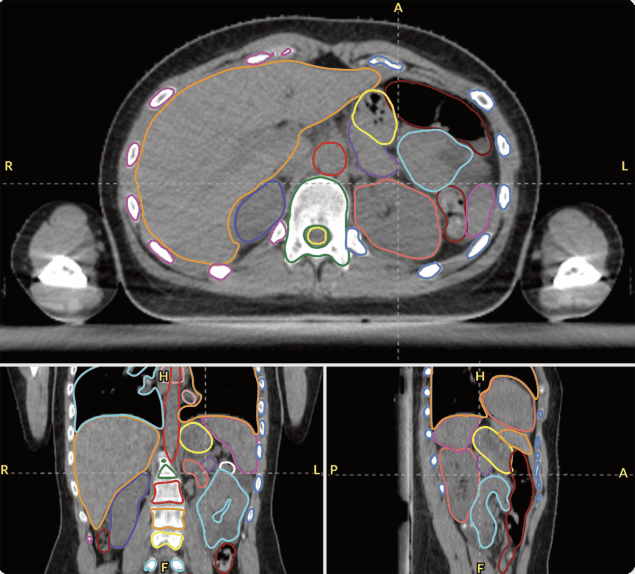An end-to-end suite of automation tools from Radformation speeds up the clinical workflow while also providing clear, accurate and reliable information to help guide treatment decisions

The prime motivation for any radiotherapy clinic is to provide the best possible care to each individual patient, while also ensuring that this highly effective cancer treatment can be offered to anyone who needs it. Those guiding principles have underpinned the development of an expanding suite of automation solutions from Radformation, which have been designed not only to streamline the clinical workflow but also to help healthcare professionals to make better informed treatment decisions.
“Since implementing Radformation’s tools into our treatment planning process we have reduced the time from a patient’s initial consultation to their first treatment from around eight days to an average of five days,” says Ryan Pennell, Chief Physicist at Weill Cornell, an academic medical centre in New York, US. “The quality of the plans we produce has also improved, avoiding the need for work to be repeated or for treatments to be delayed because something wasn’t quite right with the plan.”
Radformation offers several different automation solutions to aid the treatment planning process. First to market was ClearCheck, which interrogates the data in the treatment planning system to provide a fast and reliable verification tool. “Without ClearCheck we would need to review the dose constraints for each organ-at-risk (OAR) on an individual basis, which can take a long time for treatment sites like the lung or the head and neck,” explains Pennell. “Now the software checks all the constraints for all the OARs in just a few seconds, and red flags anything that might be problematic.”
ClearCheck is used across NYP/Cornell’s clinical team, with dosimetrists using it to verify the quality of their treatment plans, physicians reviewing the plan against their clinical goals, and physicists then making a secondary check and ensuring there will be no technical issues when it comes to delivering the plan. What sets ClearCheck apart from other automated approaches, says Pennell, is its seamless integration with the treatment planning system deployed at NYP/Cornell, in this case Varian’s Eclipse. Indeed, the software is compatible with most of the main treatment planning systems, and it also provides support for almost all treatment modalities.
“ClearCheck operates within our main working environment, which makes it easy to use and avoids the need to import and export data from a separate software platform,” explains Pennell. “That data transfer might only take a few minutes each time, but it really adds up when the information we want is needed multiple times for each patient. The integration of ClearCheck has really allowed us to improve our efficiency and our workflow.”
At Kantonsspital Aarau (KSA) in Switzerland, meanwhile, Mauricio Leick and a team of medical physicists and dosimetrists have been using ClearCheck for around three years. Leick’s main objective was to streamline and standardize the daily peer review of treatment plans produced by the KSA team. “We might have 10 doctors in these review meetings discussing around 10 cases, and each doctor would come with their own requirements for the constraints and dose limits,” he says. “There was no clear, objective or standard way to analyse the plans, but now we have an agreed set of treatment planning constraints that the software checks against.”
For Leick, one key benefit is the ability to organize all the relevant data into a single display, allowing the physicians to focus on specific issues where the plan does not meet the pre-defined criteria. “The doctors have detailed clinical protocols for treating different types of cancer, and the information we provide in the checking tables has been matched to each of those protocols,” he explains. “Every time we present a plan the doctors can clearly see all the constraints and the OARs, and see which limits are passing and which are not. It’s a much a better solution.”
Over the last few years Pennell has introduced other automated tools into Weill Cornell’s treatment planning workflow, including EZFluence for field-in-field planning and AutoContour for generating contours using deep-learning techniques. After some initial validation studies with the hospital’s physicians, this AI-powered software is now routinely used by the dosimetrists to contour the OARs from the patient’s initial CT scan. Critically, however, AutoContour makes it easy for the dosimetrist to quickly review each contour, make any necessary adjustments, and approve the final output.
“At that point the physician will check all the contours before approving the plan, and then as part of our checks in physics we also ensure that all the contours are correct and appropriate,” explains Pennell. “That means that the contours produced by the algorithm are checked at least three times, plus we have chart rounds once a week where all the finalized plans and contours are presented to the entire clinical team.”

The combination of these three automation solutions has enabled Weill Cornell to cut the time needed for treatment planning by almost 60%, while Pennell points out that the quality of the plans has also improved. “Before we implemented these tools, almost 15% of our plans needed to be redone because someone had spotted a problem,” he says. “We have now reduced that to around 5%, which equates to 10 or 20 plans per month that we no longer need to redo.”
Outside of the treatment planning process, that combined focus on quality and efficiency is also apparent in ChartCheck, which enables clinical teams to automatically monitor and document their ongoing treatments. Pennell says that it could take at least at the two hours per day to collate the data for his weekly checks, but the automated solution reduces that time to just 15 minutes while also providing more rigorous verification. “It is checking things that we didn’t look at before,” says Pennell. “Sometimes when you improve efficiency you have to sacrifice something else, but in this case we have also achieved a dramatic improvement in the quality of our weekly chart checks.”
Pennell also uses QuickCode to automate the notoriously tedious billing process, and is currently evaluating RadMachine – the company’s first product dedicated to machine quality assurance (QA). At KSA, meanwhile, Leick will shortly be introducing EZFluence to automate the planning of the field-in-field technique for treating breast cancer. “All of these tools save time,” he says. “The people at Radformation have previous experience as clinical physicists, which means that they understand the weak points in the workflow and where their tools can make a difference.”
Both Pennell and Leick have been impressed with the robustness and reliability of the software, and how easy it has been to use and install. “There is no need for any specialized training because the software is very intuitive to use,” says Leick. “The software can be installed directly from a download link, so you don’t need to be an IT expert to integrate it into the treatment planning system.”
Installing new software is slightly more challenging for Pennell, since Weill Cornell operates strict security protocols across its IT infrastructure. “Many of our suppliers find it difficult to comply with the security requirements, but Radformation has been able to implement their software within our security systems,” he says. “Out of all the vendors I’ve ever worked with, the support and service they provide is without doubt the best.”
Leick has also been impressed with the ongoing support provided by the company, as well as its focus on continuous improvement. “When we first started using ClearCheck we were able to talk directly to a physicist at Radformation,” he says. “They are always quick to respond to any feedback, and they send out regular upgrades to fix any problems and enhance the software.”
For Pennell, who has been working with Radformation and its automation tools for many years, each new addition to its product line brings extra benefits to the clinical workflow. “These tools have freed up my time and maximized my team’s efficiency, particularly as our treatment plans have become more complex,” he says. “I have been thoroughly impressed with all their products, and how the company has evolved to provide reliable and effective solutions from the initial patient consult through to physics QA and billing.”
- Readers can learn more about automation in Radformation’s upcoming webinar:
AI-Driven Solutions for Smart Departments: Automation from Start to Finish
14:00 CET, Wednesday 22 November 2023
Dr Robert Kaderka, a medical physicist at the University of Miami, US, will share his experiences with using automated solutions in a clinical setting. Ana Rato, Radformation’s Clinical Success Manager – EMEA, will join the Q&A session to share her expertise in implementing Radformation solutions across different treatment machines.
Please note that Radformation’s products are not available in all markets.




